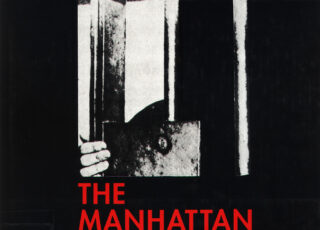Hendrix, Renaissance Aethetics and Mathematics
Mathematics played a key role in Renaissance aesthetics. Mathematics was seen as the most fundamental concept that could link nature, the human mind, and the ...
Continue Reading →Canaris, Debating Astrology in the Renaissance
Daniel Canaris is a postdoctoral research fellow at the Department of Philosophy, Sun Yat-Sen University. He received his PhD in 2017 from the University of ...
Continue Reading →Kircher, A Renaissance Man and the Quest for Lost Knowledge
Athanasius Kircher (1602–80) stands out as one of the last all-encompassing minds. For this true Renaissance man, the whole world was a glorious appearance of ...
Continue Reading →Mignolo, The Darker Side of the Renaissance
The Darker Side of the Renaissance weaves together literature, semiotics, history, historiography, cartography, and cultural theory to examine the role of language in the colonization ...
Continue Reading →Kinsman, The Darker Vision of the Renaissance
A collection of essays written essentially by members of the Center for Medieval and Renaissance Studies of the University of California, Los Angeles, exploring certain ...
Continue Reading →Guicciardini, Maxims and Reflections
In the history of Renaissance thought, Guicciardini’s Ricordi occupy a place of singular importance. Few works of the sixteenth century allow us so penetrating an ...
Continue Reading →Erasmus, Adages
Erasmus’ Adagia has been called ‘one of the world’s biggest bedside books,’ and certainly the more than 4000 proverbs and maxims gathered and commented on ...
Continue Reading →De Montaigne, The Complete Essays
Michel de Montaigne was one of the most influential figures of the Renaissance, singlehandedly responsible for popularising the essay as a literary form.In 1572, Montaigne ...
Continue Reading →Da Vinci, A Treatise on Painting
The young student should, in the first place, acquire a knowledge of perspective, to enable him to give to every object its proper dimensions: after ...
Continue Reading →Bruno, A General Account of Bonding
Giordano Bruno’s notorious public death in 1600, at the hands of the Inquisition in Rome, marked the transition from Renaissance philosophy to the Scientific Revolution ...
Continue Reading →Most liked books

Tschumi, The Manhattan Transcripts
May 23, 2025
Tschumi, Red is not a Color
May 23, 2025Recent Comments
Categories
- _English Language 1454
- _French Language 55
- _German Language 69
- _Italian Language 54
- _Latin Language 45
- 1750-1850 64
- 17th Century 77
- 17th culture and other cities in Italy 5
- 19th century 45
- 20th Century 151
- 21th Century 75
- Aesthetics 5
- Afrofuturism 3
- Ancient Literature 37
- Anthropocene 1
- Anthropology 3
- Architectural Theory 228
- Architecture + Philosophy 37
- Architecture and Literature, Symbolism 36
- Art 13
- Art Theory 110
- Artificial Intelligence 11
- Artists in Rome 20
- Astronomy 2
- Autobiography 1
- Bernini 19
- Biology 5
- Catalogue 2
- Christian Iconography 18
- Christianity 13
- Cinema 2
- City 45
- Classical 1
- Construction 1
- Contemporary 2
- Design 29
- Digital Architectonics 26
- Drawings 41
- Economy 31
- Empire, Architecture + Catholicism 14
- England & British Isles 26
- Enlightenment Library 127
- Evolution 6
- Fashion 6
- Feminism 20
- Film Festival 1
- France 47
- Gender and Sexuality Studies 5
- Gothic 13
- Greek, Roman Library 99
- Historiography 43
- Humanism 12
- India 5
- Islam 5
- Italy 80
- Landscape Architecture 8
- LGBT 1
- Libraries 0
- Linguistics 6
- Literary Criticism 11
- Literary Theory 82
- Literature 95
- Low Countries (Benelux) 14
- Mathematics 61
- Medicine 4
- medieval library 38
- medieval literature 12
- Modern 51
- Monuments + Conservation 27
- Music Theory 1
- Mysticism 4
- Mythology 19
- Nature, Ecology, Animals 4
- Neurobiology 1
- Opera 5
- Philosophy 346
- Physics 16
- Poetry 6
- Politics 76
- Popes, Vatican, Rome 27
- Portrait, Sculpture, Materiality 56
- Post-Modern 22
- Programming 2
- Psychology 22
- Religion 23
- Renaissance 86
- Renaissance Library 80
- Rhetorics 1
- Roman Architecture 21
- Rome 122
- Schinkel 8
- Science 57
- Sociology 21
- Sound 7
- Sources 56
- Spain 10
- Switzerland 48
- Uncategorized 73
- Urbanism 53
